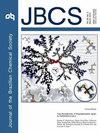Quantitative GC-MS Analysis of Sawdust Bio-Oil
IF 1.3
4区 化学
Q3 CHEMISTRY, MULTIDISCIPLINARY
引用次数: 0
Abstract
Bio-oils from biomass pyrolysis have a highly promising potential as biofuels or sources of chemicals. The quantitative analysis of bio-oils is quite difficult and requires many standards. In this study, we developed a methodology using only 16 standards for determining the concentration of 49 compounds, representatives of the main chemical classes commons in bio-oils, using relative response factors (RRF) and analytical curves. Five Pinus sawdust bio-oils were analyzed using a GC-MS-DB-5 capillary column (60 m). SCAN mode (from 45 to 450 Daltons) and retention indices (LPTRI) were used for qualitative analysis. For quantitative analysis, SIM mode was preferred, and analytical curves were constructed from an initial solution at 400 mg g-1 of each of the 16 standards, with concentrations ranging from 1 to 150 mg g-1 added to the internal standard (methyl hexanoate) at 70 mg g-1. After the positive identification and quantification of 9 compounds (among the 16 standards used), the other compounds were quantified using the RRF obtained from a standard solution at 30 mg g-1, considering the similarities with those identified standards. 196 compounds were identified, while 49 compounds were quantified, highlighting the monoaromatic hydrocarbons, naphthalenes, benzofurans, alkyl phenols, and catechols.木屑生物油的GC-MS定量分析
生物质热解产生的生物油作为生物燃料或化工原料具有很大的潜力。生物油的定量分析相当困难,需要多种标准。在本研究中,我们开发了一种仅使用16个标准的方法,利用相对响应因子(RRF)和分析曲线来测定生物油中49种化合物的浓度,这些化合物代表了生物油中常见的主要化学类别。采用GC-MS-DB-5毛细管柱(60 m)对5种松木木屑生物油进行分析,采用45 ~ 450道尔顿扫描模式(SCAN mode)和保留指数(LPTRI)进行定性分析。对于定量分析,首选SIM模式,并从16种标准中每种标准的400 mg g-1初始溶液中构建分析曲线,在70 mg g-1的内标(己酸甲酯)中加入浓度为1至150 mg g-1的浓度。在使用的16个标准品中,对9个化合物进行阳性鉴定和定量后,考虑到与鉴定标准品的相似性,使用30 mg g-1标准溶液中获得的RRF进行定量。共鉴定出196个化合物,并对49个化合物进行了定量分析,重点是单芳烃、萘、苯并呋喃、烷基酚和儿茶酚。
本文章由计算机程序翻译,如有差异,请以英文原文为准。
求助全文
约1分钟内获得全文
求助全文
来源期刊
CiteScore
2.90
自引率
7.10%
发文量
99
审稿时长
3.4 months
期刊介绍:
The Journal of the Brazilian Chemical Society embraces all aspects of chemistry except education, philosophy and history of chemistry. It is a medium for reporting selected original and significant contributions to new chemical knowledge.

 求助内容:
求助内容: 应助结果提醒方式:
应助结果提醒方式:


